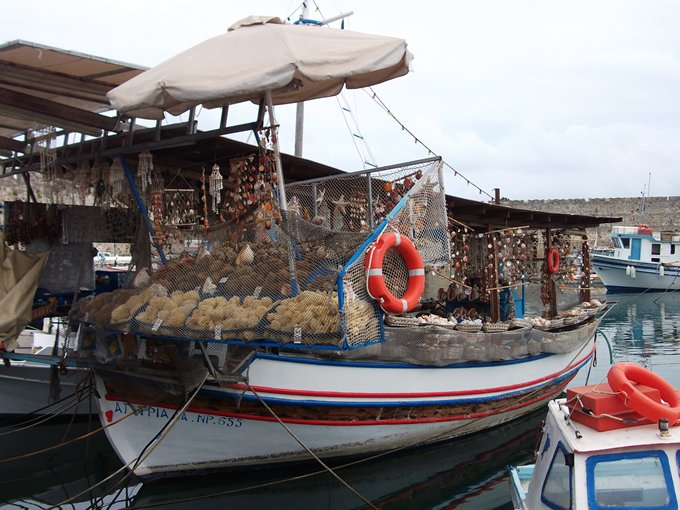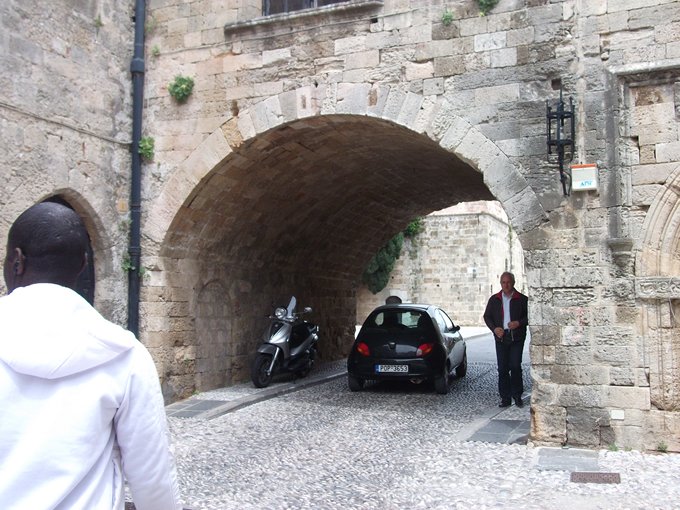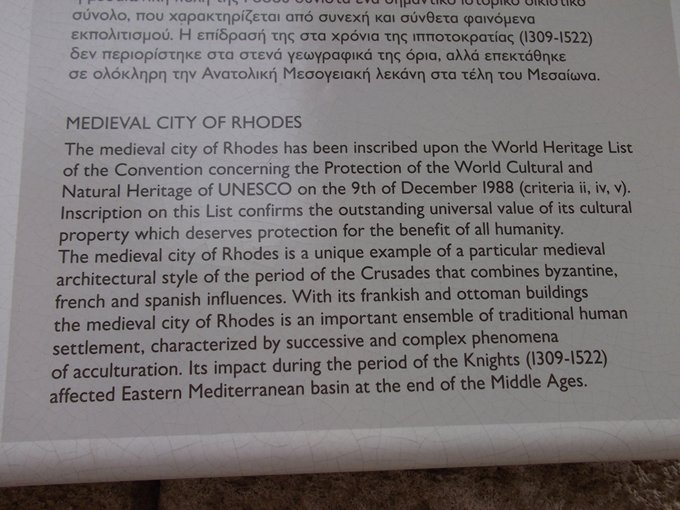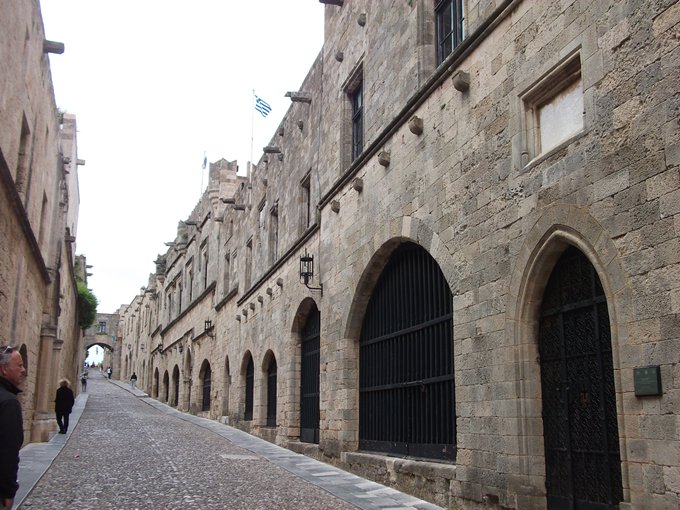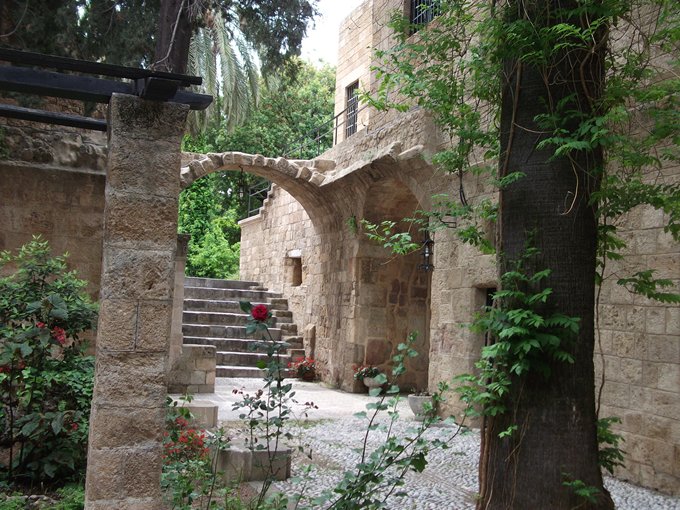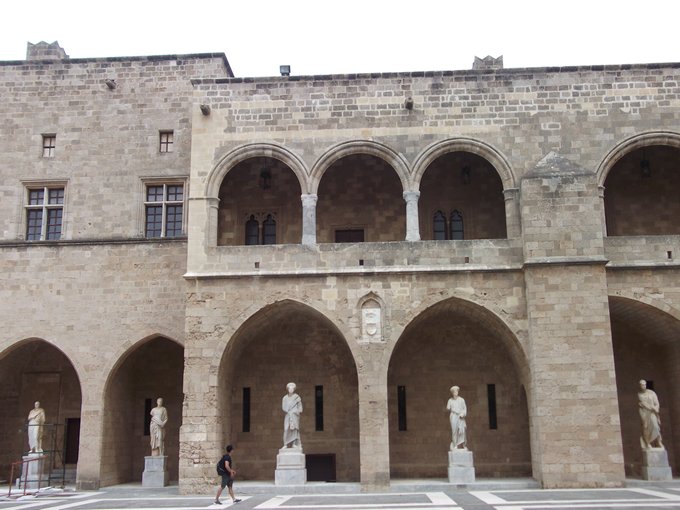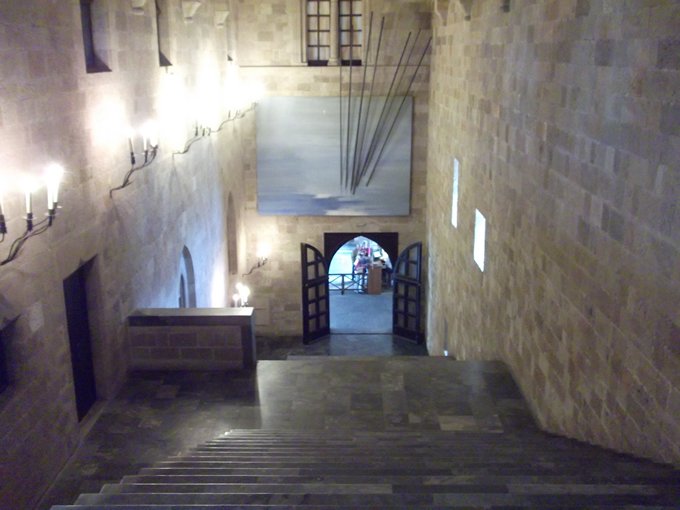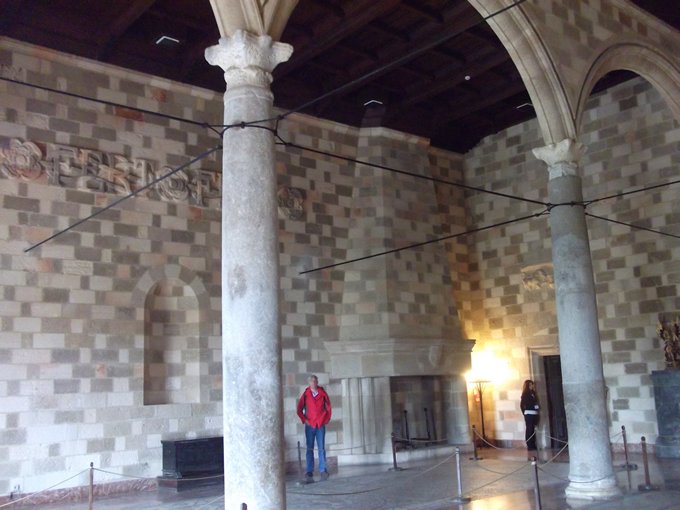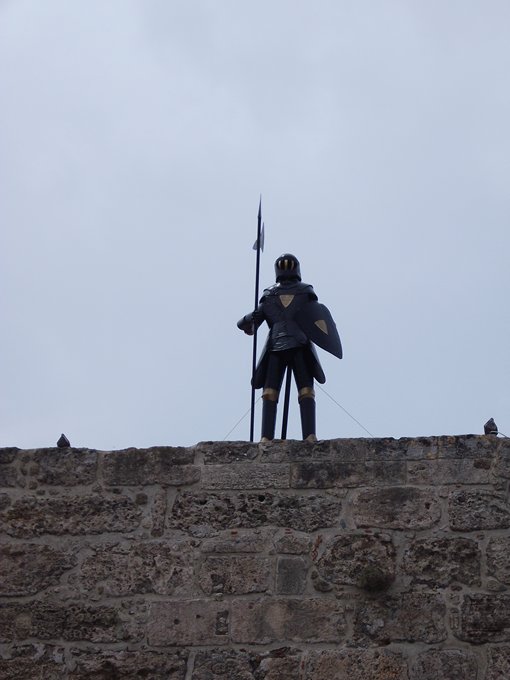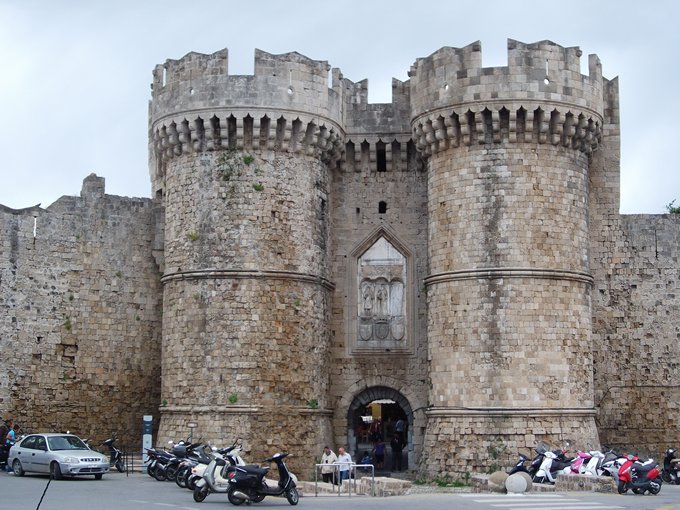Rhodes Island, Greece. Sunday, 27th April, 2014.

We decided for my birthday we would take the fast catamaran to Rhodes which takes only an hour from Marmaris. We were not disappointed and had a lovely time exploring the Palace of the Grand Masters in the old town and the Street of the Knights.
The Knights of Rhodes were founded in the 11th century by merchants from Amalfi, the Order of Hospitallers of the Knights of St. John guarded the Holy Sepulchre and tended Christians pilgrims in Jerusalem. They became a military order after the First Crusade (1096-9) but had to take refuge in Cyprus when Jerusalem fell in 1291. They then bought Rhodes from the Genoese pirate Admiral Vignoli in 1306 and eventually conquered the Rhodians in 1309. A Grand Master was elected for life to govern the Order which divided into seven nationalities. France, Italy, England, Germany, Poland, Spain and Auyvergne each protected an area of city wall known as a curtain. The Knights fortified the Dodecanese with around 30 castles and their defenses are some of the finest examples of medieval military architecture.
One of the old town’s most famous sights is the medieval Street of the Knights which is situated between the harbour and the Palace of the Grand Masters. It is lined by the Inns of the seven nationalities of the Order of St. John. Begun in the 14th century in Gothic style the Inns were used as meeting places for the Knights. The site of the German Inn is unknown but the others were largely restored by the Italians in the 1930’s. The houses were built for the head of each nationality. Like the France Inn each would have a coat of arms set in the wall representing the Order of the Knights of St. John and the Royal House of France.
The Palace of the Grand Masters is a fortress within a fortress and the seat for 19 Grand Masters being the nerve center or Knights Quarter and the last refuge for the population in times of danger. Built in the 14th century it survived an earthquake and siege but was blown up by an accidental explosion in 1856. It was restored b y the Italians in the 1930’s for Mussolini and King Victor Emmanuel lII. One of the nice exhibits is the priceless mosaics from sites in Kos after which some of the rooms are named. The houses house two exhibitions one being Medieval and the other Ancient Rhodes.
The main gate is very imposing which was built by the Knights which has twin horseshoe shaped towers with swallowtail turrets and the coat of arms for the first Grand Master who ruled from 1319 to 1346. The central courtyard with the castle built around it has geometric marble tiles with the north side of the courtyard lined with Hellenistic statues taken from Kos.
The great siege of Rhodes in 1522 resulted in the Knights being defeated by the Turks. From a garrison of 650 knights only 180 survived. They negotiated a safe departure. Seven years later they found sanctuary on the island of Malta. Their final defeat came in 1798 when Malta was captured by Napoleon.
We walked to the new marina which has been being built for many years. A beautiful wall but it is all fenced off and not a boat inside. It was built in the days of lots of EC money but it is just left now and appears perhaps never to be finished.
The journey back to Marmaris was uneventful and after we were safely back at the marina we had a mighty thunder and lightning storm with at times hell stones to finish off the day.
